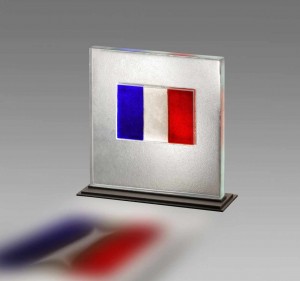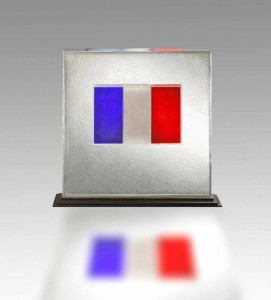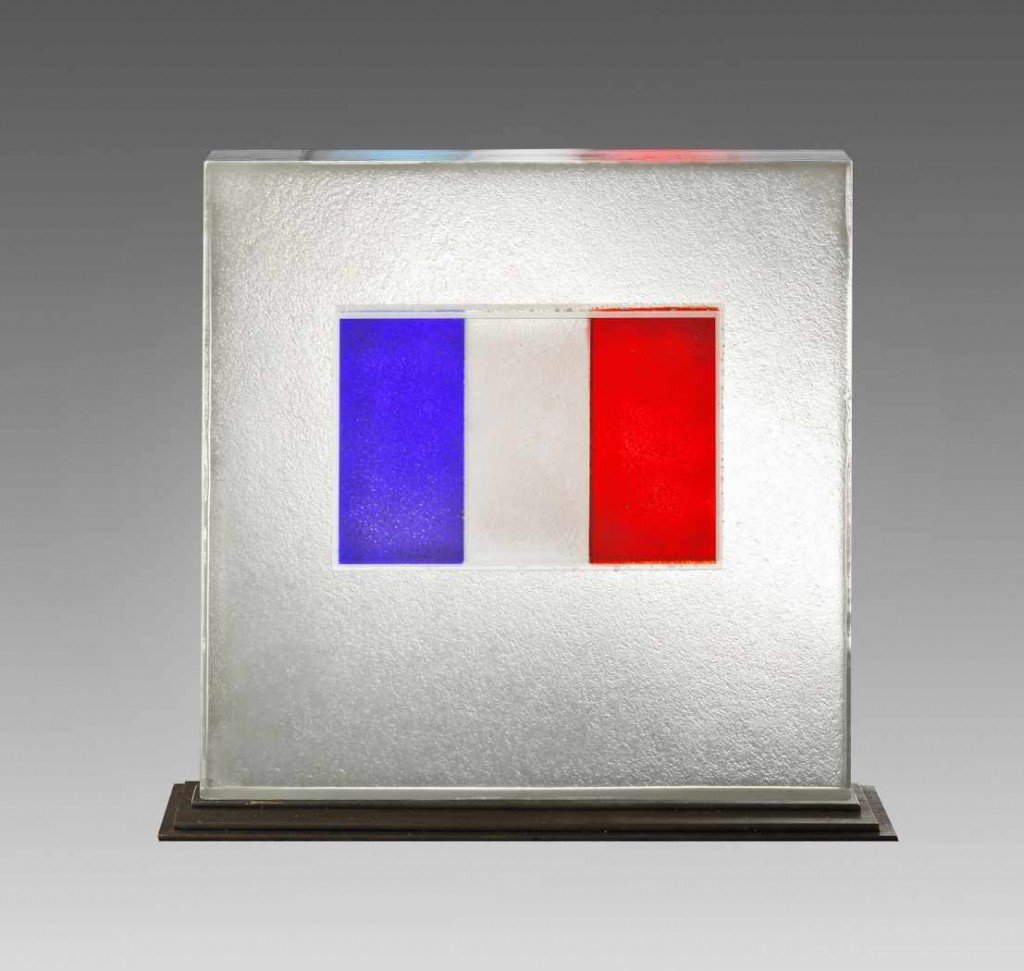 Work available
Work available
France
2011
50 x 50 x 3.3 cm | 28 kg – Multi-layer fused glass with pigment inclusion
![]()
National emblem of the Fifth Republic adopted by the constitutions of 1946 and 1958, the tricolor flag was born during the French Revolution.
Indeed, after the storming of the Bastille, the blue and red cockades of the Parisian municipal guard became popular.
La Fayette, who had just fought alongside the American insurgents, had the idea of integrating the white of the royal military flag into the colors of the Republican Guard. This cockade was immediately a great success because all the sympathizers of the cause of freedom wore the blue, white and red of the flag of the United States.
Le 17 juillet 1789, trois jours après la prise de la Bastille, Louis XVI se rendant à l’hôtel de ville de Paris, accepta de porter cette cocarde tricolore. Par la suite, dans son décret du 20 mars 1790, l’Assemblée nationale décida que, « lorsque les officiers municipaux seront en fonction, ils porteront pour marque distinctive une écharpe aux trois couleurs de la nation :
bleu, rouge et blanc. »
Click on the images to zoom
Le drapeau prend sa forme définitive le 15 février 1794, lorsque la Convention nationale le décrète pavillon national et décide que la disposition soit verticale pour éviter toute confusion avec le drapeau néerlandais.
Official name: République française
Continent: Europe et océans (DOM-TOM) | Capital: Paris
Area: 675 417 km2 | Population (2011) : 65 027 000 habitants
Official language: français | Currency: Euro
Border countries: Belgique, Luxembourg, Allemagne, Suisse, Italie, Monaco, Espagne, Andorre
National holiday: 14 juillet | Devise : Liberté, égalité, fraternité
Member of the United Nations: 24 October 1945
Member of UNESCO: November 4, 1946



